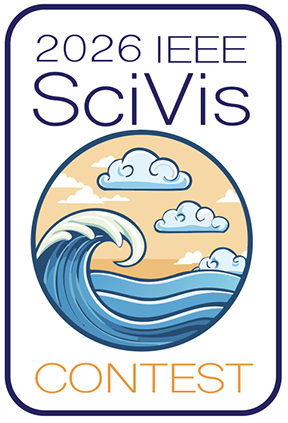IEEE 2026 SciVis Contest
Visualizing the future of climate science, one dataset at a time.
What is the SciVis Contest?
Welcome to the 2026 IEEE SciVis Contest website. This contest is held annually as part of the IEEE VIS Conference. In 2026, this contest will focus on the visualization of petascale oceanic and atmospheric climate data provided by NASA.
This year’s challenge emphasizes advanced visualization methods for exploring vast climate datasets, encouraging innovative solutions that address real-world issues such as climate prediction, weather simulation, and environmental impact analysis.

Easy to Participate
The SciVis contest is designed for accessibility, with clear guidelines and easy submission procedures. Whether you're an experienced researcher or a student, you can dive into the visualization tasks using the provided datasets. For guidance and support, explore the contest details available on this website.
Visualizing Complex Data
This year’s contest tasks involve visualizing multi-terabyte climate datasets. Participants will explore data from simulations like NASA’s ECCO LLC4320 and DYAMOND models, focusing on visualizing the impacts of extreme weather events, ocean currents, and climate change over time.
Leverage Open-Source Tools
Participants are encouraged to use open-source tools and packages like OpenVisus, Openvisuspy, Python, ParaView, and VTK for data analysis and visualization. The data is completely hosted in cloud, making it easier to run your visualizations from anywhere in the world.
Win Exciting Cash Prizes!
Submissions will be evaluated by the contest chairs, focusing on criteria such as usability, creativity, and innovation. The top entry will be awarded a $1000 cash prize, generously sponsored by ViSOAR.
On this website, you can find information on the provided data, visualization tasks, and the submission process. If you have any questions, feel free to contact the contest chairs. We're excited to see your contributions and creative approaches to visualizing climate data!